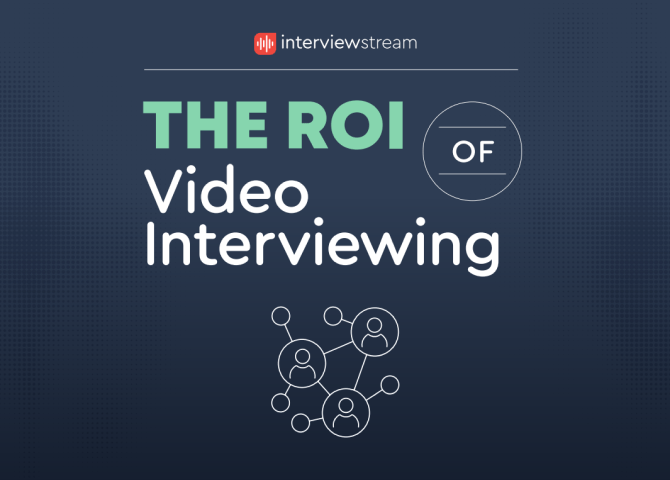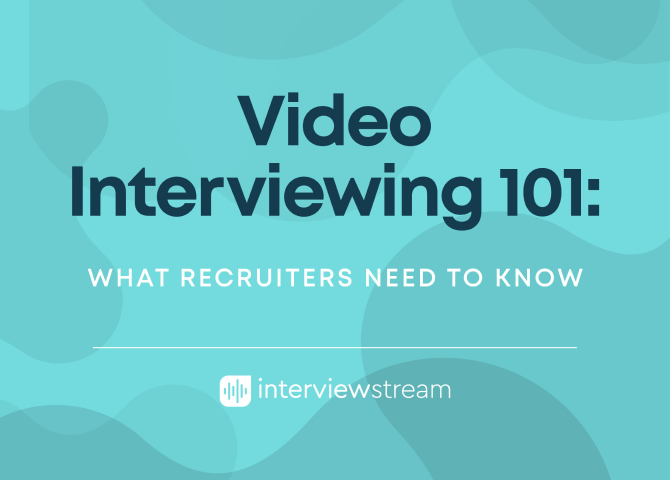Quality of Hire: What It Is, Why It’s Important, and How To Measure It

The rundown
- Quality of hire is consistently ranked as one of the most important hiring metrics to measure, but only a third of companies believe they are measuring it correctly.
- This metric can show you not only how well your hiring team performs, but also the smoothness of your onboarding and application process.
- Quality of hire can incorporate many different metrics, but we recommend 5: meeting initial goals, meeting quarterly goals, longevity at company, cultural fit, and employee engagement.
- Once you have measured quality of hire (after 6+ months), use your insights to enact change in your hiring process to fully take advantage of the data.
Table of contents
- What is quality of hire?
- Why is it important to measure quality of hire?
- How to measure quality of hire
- When to measure quality of hire
- 5 best practices to use when measuring quality of hire
- How to improve quality of hire
- About interviewstream
What is quality of hire?
Quality of hire is ranked as one of the most important recruiting metrics for HR professionals, but it is also one of the hardest to measure. In a nutshell, quality of hire is a measurement of the value your new hire brings to your company. However, how you measure quality of hire depends on the employee and their position – and we’ll let you in on a secret – it is not a short-term, one-time measurement.
To measure quality of hire, you might want to take into account factors such as: employee performance, engagement, feedback from their manager and peers, turnover rates, your new hire’s view of the company, how well they fit with the company culture, and how they track on achieving their quarterly goals.
Notice that almost all of these measurements normally don’t tie directly to a number value, and they aren’t exactly 100% objective – so your first hurdle is finding out which of these metrics are important to your company and your second will be working out a way to translate your findings into a number.
Interested in our HR newsletter? Sign up below!
Sign up for our newsletter – we send out an email every 6 weeks which includes HR trends, industry-relevant knowledge, and the latest interviewing tips for recruiters and candidates.
Why is it important to measure quality of hire?
Tracking data on quality of hire allows your hiring team to make educated hiring decisions. For example, if outgoing candidates skilled at time-management score highly for your sales position’s quality of hire, your recruitment team knows that candidates with these characteristics will likely make great sales associates.
This directs them to hire candidates with these same qualities, improving retention. Another important note is: keeping track of this data helps you figure out where to hire from (and where not to). Honestly, who your candidates are is more important than how they found you but if you’re constantly getting bad referrals from one place in particular, it’s time to ax that particular acquisition method.
Measuring quality of hire gives you insight into the effectiveness of your talent acquisition team, but can also point to other weak points in your company. For example, if you have many new hires working in a specific team that all have great performance, but low retention – it might be time to consider what is going wrong in that department.
How to measure quality of hire
Quality of Hire = (Metric 1 % + Metric 2 % + Metric 3 % + …) / (Total number of metrics)
Measure quality of hire with the simple formula above. Input the calculated percentages of each metric you have chosen to calculate, and divide by the number of metrics.
When to measure quality of hire
Quality of hire is not something you can immediately assign a value – you have to wait at least 6 months before you begin calculating, and you’ll get a more accurate picture if you re-evaluate after the 1-year mark. Some things, like 30-60-90 day goals, team member feedback, and cultural fit can be measured more quickly, but to include stats like employee engagement, turnover, and longevity, you’ll need to be patient.
5 best practices to use when measuring quality of hire
1. Establish performance metrics for your new hire’s first 90 days
Before you even hire your top candidate, create a list of 30-60-90 day performance indicators based on the job description. At each checkpoint, grade your employee on their performance – for example, if they’ve consistently completed 4 out of 5 of the main objectives over that period, their score would be an 80%.
Keep in mind that these metrics are position and person-bound. You wouldn’t expect the same result from a candidate that just graduated from college as you would a candidate that has 5 years of experience – so make sure these objectives are realistic and tweak as necessary.
One of our clients, John Hopkins, uses on-demand video interviews to check in on their new hires on a monthly basis after they are hired. Healthcare workers are famously busy and don’t always have the time to sit down for 30 minutes to chat about their views on the company and their progress. Through recorded videos, the employee is able to give feedback on their time and their HR colleagues can review and react to these videos whenever they see fit.
2. After the onboarding period, set quarterly goals and report on them
This is the natural progression of your performance metrics based on your employee’s 30-60-90 day objectives, and by creating quarterly goals you ensure that you’re continuing to track your new hire’s performance. Doing this allows you to continuously evaluate quality of hire after 6 months, 12 months, and beyond.
3. Keep track of turnover rates and longevity with the company
This is a long-play metric, unless your employee resigns very quickly (not a great look for quality of hire). Measure this at the year mark, noting any turnover concerns and their career trajectory with the company. As an addendum – promotions also fall under this umbrella. If an employee is promoted within two years or so, this should up their quality of hire score as they are now more of an asset to the company than when they were hired.
4. Implement employee engagement surveys for new hires
A happy employee is a productive employee. Employee engagement is an important metric to measure because engaged employees perform over 200% better than unengaged employees. Especially in the era of social media, keeping employees engaged and happy at your company is vital – multiple bad reviews on job review sites like Glassdoor or Trustpilot and your job as a recruiter is going to become much more difficult. So, it pays to keep tabs on employee engagement. But how?
Employee engagement surveys work best when as anonymous as possible, so a good rule of thumb is to conduct these surveys every 4 – 6 months. Create questions around engagement, accomplishment, autonomy, environment, growth, and relationships within the company. Some questions could include:
- On a scale of 1 – 10, how would you rate your satisfaction with the company
- True or false: When you give an opinion you expect to be listened to
- Do you feel your position allows you to acquire new skills?
- How meaningful is your work to you (on a scale of 1 – 10)
- Do you work effectively with your team? If not – what could be done to improve this?
- How well do you feel management and the executive team communicate company goals?
5. Establish guidelines for cultural fit
To gain some insight on cultural fit, talk with your new hire’s direct manager and any teammates they interact with semi-regularly to check in on how they are doing. Even asking a simple question like “How well does X fit into the company culture?” will give you valuable insight into how well your new hire functions within their team.
How to improve quality of hire
All of this information serves for nothing if you aren’t going to do anything to improve quality of hire after measuring all your key metrics. So – let’s break down how to improve this key aspect of your recruitment process.
- Look at areas where you are performing above average and below average. Maybe new hires are hitting 80-100% in all key metrics except cultural fit – that is an indicator that you need to be asking more interview questions centered on finding the right cultural fit for the team/company.
- If you’re experiencing a lot of turnover and you can’t put your finger on why these new hires are leaving, take a look at your onboarding process. A bad onboarding process can sour a relationship with your new hire.
- Find out where your best recruits are coming from. Is it employee referrals? A specific job board? Job fairs? Whichever one it is – make sure you are dedicating more resources to that acquisition channel, as well as rooting out the acquisition channels that are not yielding the right results.
When you measure quality of hire, you’re not only taking the pulse of your recruitment process, but also of your entire company as a whole. Measuring these metrics can seem daunting, but by quantifying the success of your new hires, you can decrease turnover and create a more engaged and productive team.
Want to learn how video interviewing improves your quality of hire?
Chat with a client success expert today and learn how to leverage remote interviewing solutions to improve the quality of hire at your organization.
About interviewstream
interviewstream is an industry leading recruiting software company that helps you reach your top candidates more effectively. Our customers have completed over 3 million interviews using interview builder, interview on demand, interview scheduler, interview connect – and we’d love to help you as well. Talk to an expert today to learn how to get started.
The interviewstream platform
Speak to an expert today to learn how our remote interviewing solutions make hiring more effective.
About interviewstream
As companies transition to remote work, we exists to help recruiters and hiring teams ask the right questions every time, screen candidates faster, make scheduling easier and reach candidates everywhere. Using our remote interviewing platform, your team will have a complete view of the candidate in one location while also leveraging one of the leading platforms for online interviewing.



